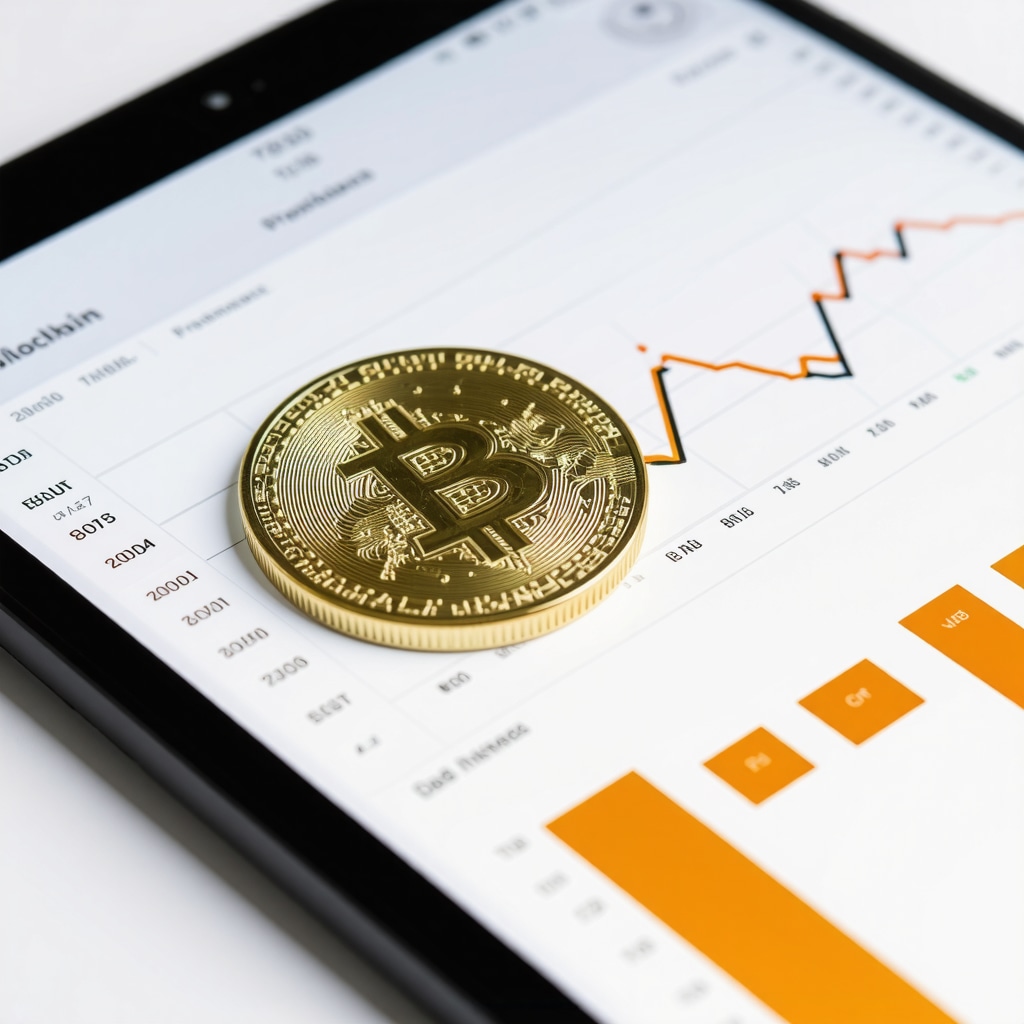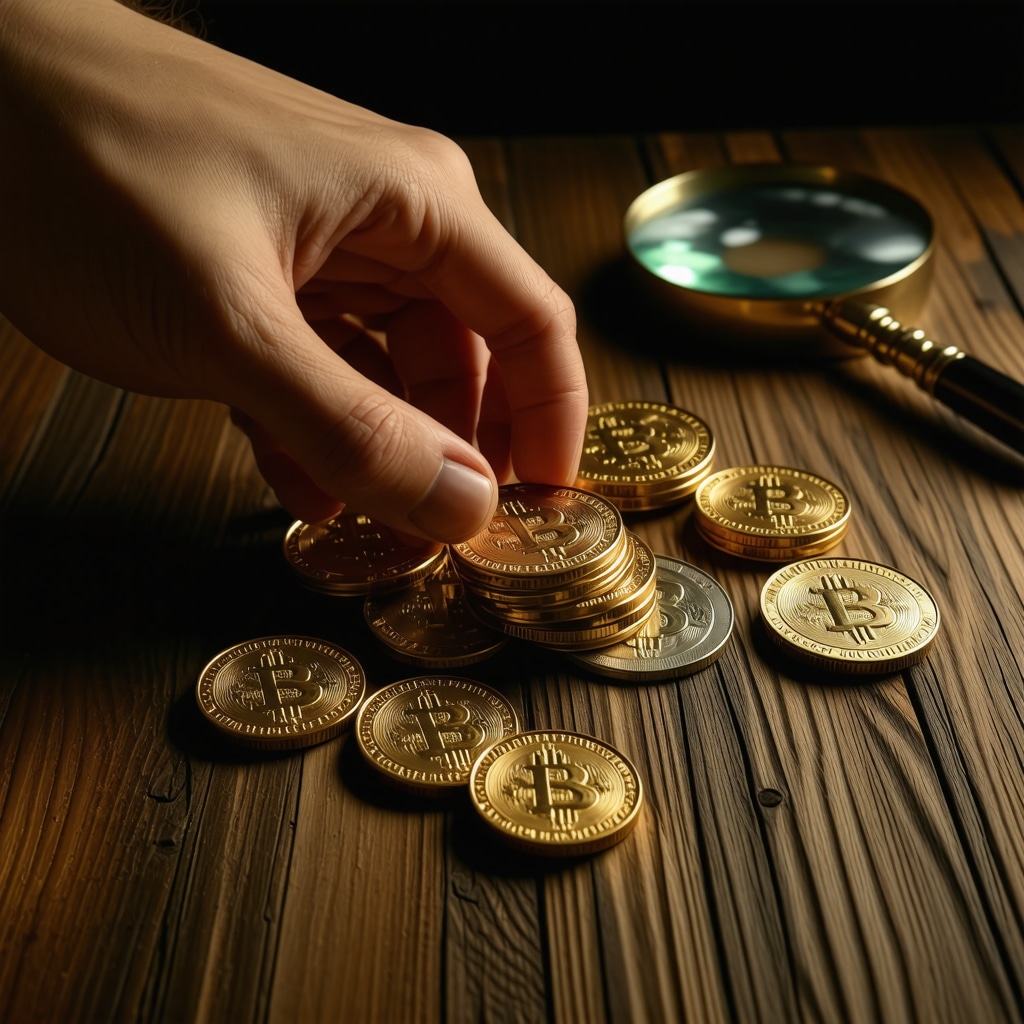Unlocking the Golden Opportunity: Why Gold Coins Matter for Investors and Collectors
Choosing the best gold coins for investment and collecting is both an art and a science. As a tangible asset, gold coins offer a unique blend of historical allure, intrinsic value, and liquidity that few other investments can match. Yet, navigating the diverse world of gold coins—from bullion to numismatic rarities—requires seasoned insight. This guide dives deep into the nuances of selecting gold coins that not only preserve wealth but also captivate collectors and savvy investors alike.
Decoding Purity and Weight: The Foundation of Smart Gold Coin Selection
At the core of any valuable gold coin lies its purity, often expressed in karats or fineness (e.g., .9999 pure). Investors should prioritize coins with high purity to ensure maximum intrinsic value. Equally important is the weight, typically measured in troy ounces, which directly influences market value. For instance, the American Gold Eagle contains 91.67% gold but is popular for its government backing and liquidity, while Canadian Maple Leafs boast a 99.99% purity that appeals to purists.
Beyond Bullion: How Rarity and Historical Significance Amplify Value
While bullion coins reflect the spot price of gold, collectible coins with limited mintage, unique designs, or historical provenance can command significant premiums. Understanding mint marks, year of issue, and condition (graded by professional services like PCGS or NGC) can transform a simple purchase into a long-term treasure. For example, a well-preserved 1933 Double Eagle is priceless due to its rarity and storied past, illustrating how numismatic factors can elevate a coin’s worth beyond its gold content.
What are the Key Considerations When Balancing Investment Value and Collectibility?
Balancing investment value with collectibility requires a strategic approach. Investors focused on liquidity might lean towards widely recognized bullion coins such as the South African Krugerrand or the Australian Kangaroo. Conversely, collectors seeking uniqueness should research market trends and historical contexts, leveraging grading reports to authenticate condition and provenance. Consulting reputable resources like the Professional Coin Grading Service (PCGS) can provide authoritative insights to navigate this balance.
Trusted Dealers and Secure Purchases: Safeguarding Your Golden Assets
Choosing the right dealer is paramount to avoid counterfeit coins and ensure transparent pricing. Established dealers with verifiable track records and positive client feedback are essential. Additionally, understanding current gold market trends can inform timing and selection. For a comprehensive approach to finding reliable sources, consider this guide on identifying trustworthy gold dealers.
Storage and Preservation: Protecting Your Investment for Future Generations
Physical gold coins require secure storage to maintain condition and value. Options include bank safety deposit boxes, professional vault services, or insured home safes. Environmental factors such as humidity and handling can affect coin grading over time, so using protective holders and limiting exposure is advisable. These precautions not only preserve value but also uphold the coin’s status within a collection or investment portfolio.
Have you had experiences choosing gold coins or tips to share? Join the conversation below to exchange insights with fellow enthusiasts and investors.
Personal Lessons on Timing the Market: When to Buy Gold Coins
From my own journey investing in gold coins, timing has always been a nuanced challenge. Gold prices can be influenced by a kaleidoscope of factors — geopolitical tensions, inflation fears, currency fluctuations — making the market feel unpredictable at times. I learned early on that attempting to “time” the market perfectly often leads to missed opportunities. Instead, adopting a disciplined approach of regular purchases, especially during dips, has proven more effective for me. This strategy not only smooths out volatility but also builds a diversified collection over time.
For those curious about the broader economic drivers impacting gold prices, I found insightful reports and forecasts from sources like the Gold Price Forecast 2025 particularly helpful in understanding emerging trends and making informed decisions.
Recognizing Authenticity: Why Certification Matters in Gold Coin Collecting
One of the trickiest aspects I encountered was ensuring authenticity. With the rise of sophisticated counterfeits, having gold coins certified by reputable grading services is invaluable. Organizations such as PCGS and NGC not only authenticate but also grade coins, providing a transparent benchmark for condition and rarity. This certification greatly enhances resale value and buyer confidence, a lesson I learned after a close call with a questionable coin early in my collecting days.
How Do You Balance Emotional Attachment with Investment Discipline?
This question often crosses my mind, especially when acquiring coins with historical narratives or aesthetic appeal. It’s easy to get emotionally attached to a piece and overlook market realities. I’ve found that setting clear investment goals—whether for liquidity, long-term appreciation, or pure collection enjoyment—helps maintain balance. When I treat rare coins as both cultural artifacts and financial assets, the experience is richer but also more disciplined. That said, embracing a bit of passion in this hobby is what makes it truly rewarding.
Exploring Alternative Gold Investment Vehicles Alongside Coins
While physical gold coins have been my cornerstone, diversifying into other gold investments like ETFs and futures has broadened my perspective on portfolio management. These instruments offer liquidity and ease of trade that physical coins lack, but they don’t provide the tactile satisfaction or historical intrigue I cherish. For those interested in exploring this balance, resources like the guide on Gold ETFs vs Gold Futures: Which Investment Yields Better Returns? offer deep dives into pros and cons.
Sharing Experiences: What’s Your Most Memorable Gold Coin Purchase?
I’d love to hear about your own stories or lessons learned in choosing gold coins. Have you discovered a rare gem or faced challenges with authenticity? Sharing experiences fosters a vibrant community where we all grow wiser together. Feel free to comment below or connect with fellow enthusiasts who share your passion.
Harnessing Advanced Numismatic Analytics: Elevating Your Gold Coin Investment Strategy
Beyond fundamental metrics like purity and rarity, sophisticated investors delve into numismatic analytics — a multi-dimensional approach combining historical auction data, mintage trends, and market sentiment analysis. Leveraging databases from auction houses such as Stack’s Bowers Galleries can reveal subtle price trajectories and rarity fluctuations that standard market spot prices overlook. For example, understanding how demand spikes for specific mint marks or error coins affect premiums enables targeted acquisitions with higher appreciation potential.
Moreover, integrating blockchain technologies for provenance verification is becoming a cutting-edge practice. Digital ledgers can securely record a coin’s ownership history, mitigating counterfeiting risks and enhancing buyer confidence in secondary markets. This fusion of traditional numismatics with technological innovation represents the frontier of gold coin investment sophistication.
How Does Provenance Authentication Impact Gold Coin Valuation in Modern Markets?
Provenance authentication profoundly influences valuation, especially for rare and historical coins. Coins with well-documented ownership histories, ideally certified by recognized authorities, command premiums that often exceed their intrinsic gold value. This is because provenance reduces uncertainty, a critical component in high-stakes auctions and private sales. An authenticated lineage can also reveal historical context that enriches the coin’s narrative, further appealing to collectors.
Emerging tools like non-fungible tokens (NFTs) linked to physical coins are pioneering new ways to encapsulate provenance. These digital certificates provide immutable proof of authenticity and ownership, addressing longstanding challenges in the physical gold market. Experts anticipate that as these technologies mature, they will set new standards for transparency and trust.
Mitigating Counterfeit Risks: Leveraging Scientific Techniques for Authenticity Assurance
The sophistication of counterfeiters necessitates advanced verification methods beyond visual inspection. Techniques such as X-ray fluorescence (XRF) spectrometry offer non-destructive elemental analysis, confirming gold purity and alloy compositions with high precision. This method can detect subtle deviations from expected standards that often indicate forgery.
Additionally, microscopic surface topology analysis reveals manufacturing signatures unique to mints, which counterfeit coins rarely replicate perfectly. Combining these scientific approaches with expert numismatic evaluation creates a robust defense against fraud.
Strategic Portfolio Diversification: Integrating Gold Coins with Broader Asset Classes
While gold coins offer tangible security and collectible appeal, optimal portfolio performance arises from diversification across correlated and uncorrelated assets. Incorporating gold coins into a balanced investment mix that includes equities, bonds, real estate, and alternative commodities mitigates volatility and enhances long-term growth potential.
Investors should evaluate their risk tolerance, liquidity needs, and market outlook to calibrate gold coin allocations effectively. For instance, during periods of geopolitical instability or inflationary pressures, gold coins often act as a hedge, preserving capital when other assets falter. Conversely, recognizing when to rebalance from coins to more liquid instruments like gold ETFs can optimize returns and accessibility.
In-depth financial modeling and scenario analysis, possibly facilitated by professional advisors, support these complex decisions, ensuring gold coin investments complement rather than dominate portfolios.
Ready to elevate your gold coin investment acumen? Explore our advanced resources and connect with expert advisors to tailor a strategy that aligns with your financial goals.
Unlocking the Power of Provenance: The New Frontier in Gold Coin Authentication
In the evolving landscape of gold coin investment, provenance authentication has emerged as a critical factor that can dramatically enhance a coin’s market value and investor confidence. Beyond mere certification, documented ownership histories and verified chain-of-custody records serve as powerful tools to mitigate risks associated with forgery and fraud. This is especially pertinent in a market where rare coins often exchange hands through private sales and auctions, where transparency can vary.
Technological innovations such as blockchain-based provenance tracking and the integration of non-fungible tokens (NFTs) allow for immutable, tamper-proof records linking physical coins to their digital identities. These developments not only reinforce authenticity but also open avenues for fractional ownership and enhanced liquidity in secondary markets. Pioneering numismatic firms and auction houses are increasingly adopting these methods, signaling a paradigm shift in how collectors and investors perceive and transact with gold coins.
Scientific Authentication Techniques: A Robust Shield Against Sophisticated Counterfeiting
As counterfeiters employ increasingly advanced techniques, relying solely on visual inspection or traditional appraisal methods is insufficient. Cutting-edge scientific approaches such as X-ray fluorescence (XRF) spectrometry enable non-destructive compositional analysis, precisely measuring elemental makeup to verify if the coin’s alloy matches mint specifications. This method can detect subtle anomalies indicative of forgery or alteration.
Complementing elemental analysis, microscopic surface topology examinations identify mint-specific manufacturing characteristics—such as die marks and surface textures—that are nearly impossible to replicate perfectly. When combined with professional numismatic expertise, these scientific tools form a comprehensive authentication framework that significantly reduces the risk of acquiring counterfeit gold coins.
How Can Advanced Numismatic Analytics Inform Strategic Gold Coin Acquisitions?
Advanced numismatic analytics harness extensive datasets encompassing historical auction results, mintage figures, and real-time market sentiment to forecast demand and valuation trends with greater precision. By analyzing patterns such as price volatility linked to specific mint marks or error coins, investors can pinpoint undervalued opportunities poised for appreciation.
Moreover, integrating sentiment analysis from collector forums and social media platforms provides nuanced insights into shifting preferences and emerging market niches. Platforms like Stack’s Bowers Galleries offer invaluable repositories of auction data that, when combined with bespoke analytic models, empower investors to make data-driven decisions that transcend traditional spot price considerations.
Strategic Portfolio Diversification: Positioning Gold Coins within a Holistic Investment Framework
Incorporating gold coins into a diversified portfolio requires a sophisticated understanding of asset correlations, liquidity profiles, and macroeconomic sensitivities. While gold coins provide a tangible hedge against currency devaluation and systemic risks, they should be balanced with liquid assets such as equities, bonds, and alternative commodities to optimize risk-adjusted returns.
Dynamic portfolio rebalancing—aligned with market cycles and individual risk tolerance—enables investors to capitalize on periods of heightened volatility or geopolitical uncertainty. Engaging with professional financial advisors who specialize in precious metals can facilitate tailored strategies that integrate gold coins without compromising overall portfolio agility and growth potential.
Embrace these advanced insights today—connect with our network of numismatic experts and financial strategists to elevate your gold coin investment strategy to unprecedented heights.

Frequently Asked Questions (FAQ)
What factors determine the value of a gold coin beyond its gold content?
Beyond intrinsic gold purity and weight, a gold coin’s value is significantly influenced by rarity, historical significance, mint mark, condition, and provenance. Numismatic factors like limited mintage, unique designs, and certification grading (e.g., by PCGS or NGC) can add substantial premiums over spot gold prices.
How can I verify the authenticity of a gold coin to avoid counterfeits?
Authenticity verification involves multiple layers: professional certification by reputable grading services, scientific techniques like X-ray fluorescence (XRF) for elemental analysis, and microscopic examination of mint-specific surface features. Emerging provenance technologies such as blockchain and NFTs further enhance trust in authenticity.
Is it better to invest in bullion gold coins or collectible numismatic coins?
It depends on your investment goals. Bullion coins offer liquidity and straightforward exposure to gold prices, ideal for hedging and quick resale. Collectible coins, while less liquid, can appreciate based on rarity and historical value, offering higher long-term returns but requiring deeper market knowledge and patience.
How should gold coins be stored to maintain their condition and value?
Proper storage is critical to preserve coin condition. Options include bank safety deposit boxes, professional vaults, or insured home safes with controlled humidity. Using protective holders and minimizing handling prevents damage, preserving grading status and resale value.
What role does provenance play in modern gold coin valuation?
Provenance provides documented ownership history and chain-of-custody, reducing uncertainty and fraud risk. Coins with verified provenance often command premiums as collectors value transparency and historical narratives. Blockchain-based provenance tracking and NFTs are pioneering this space by offering immutable records.
Can advanced numismatic analytics improve investment decisions?
Yes. By analyzing auction data, mintage trends, and market sentiment, investors can identify undervalued coins, anticipate demand spikes, and make data-driven acquisitions beyond spot price considerations. This approach enhances strategic buying and portfolio optimization.
How do gold coins fit into a diversified investment portfolio?
Gold coins serve as a tangible hedge against inflation, currency risk, and geopolitical uncertainty. When balanced with equities, bonds, and other assets, they reduce portfolio volatility and preserve capital. Strategic allocation and periodic rebalancing aligned with market conditions optimize risk-adjusted returns.
What are the risks involved in investing in gold coins?
Risks include counterfeit coins, market volatility, liquidity constraints (especially for rare coins), storage costs, and potential premiums paid over spot gold price. Due diligence, certification, and professional advice mitigate these risks.
How does the grading of gold coins affect their marketability and price?
Grading assesses a coin’s condition and authenticity, with higher grades typically commanding significantly higher prices and easier resale. Graded coins provide buyer confidence and transparency, critical in secondary markets and auctions.
Are there emerging technologies that could change gold coin collecting and investing?
Yes, blockchain provenance tracking and NFTs linked to physical coins are revolutionizing transparency and liquidity. These technologies enable immutable ownership records, reduce fraud, and may facilitate fractional ownership and digital marketplaces, shaping the future of numismatic investment.
Trusted External Sources
- Professional Coin Grading Service (PCGS): A leading authority providing coin certification and grading, essential for establishing authenticity and condition benchmarks critical to valuation.
- Numismatic Guaranty Corporation (NGC): Another premier grading organization offering detailed coin evaluation reports, widely respected within collector and investor communities.
- Stack’s Bowers Galleries: Renowned auction house with comprehensive historical auction data and market analysis, invaluable for numismatic analytics and trend forecasting.
- World Gold Council: Provides extensive research on gold market dynamics, investment trends, and macroeconomic factors influencing gold prices.
- International Monetary Fund (IMF) Precious Metals Statistics: Offers authoritative data on global gold reserves and flows, useful for understanding supply-side factors affecting gold coin markets.
Conclusion
Gold coins represent a unique intersection of tangible wealth preservation, historical artistry, and strategic investment potential. Successful navigation requires balancing purity, rarity, provenance, and market dynamics while leveraging advanced authentication and analytic tools. Incorporating gold coins thoughtfully within a diversified portfolio can enhance stability and long-term value appreciation. As the numismatic landscape evolves with technological innovations like blockchain and NFTs, investors and collectors alike gain unprecedented transparency and security. Harnessing these insights equips you to make informed, confident gold coin choices that align with your financial ambitions and passion for history. Engage with our expert content, share your experiences, and elevate your gold coin investment journey today.










